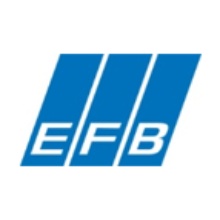Willmann, T., Schilling, M., & Bischoff, M. (2025). Data-Based Estimation of Critical Time Steps for Explicit Time Integration.
International Journal for Numerical Methods in Engineering,
126, Article 4.
https://doi.org/10.1002/nme.7666 Zusammenfassung
Finding the critical time step for conditionally stable time integration methods has been a decades-long problem. The apparently obvious option of directly computing it from a generalized eigenvalue analysis, identifying the largest eigenfrequency of the discrete system, is usually impractical because of its numerical expense and because a stiffness matrix is often unavailable in the context of explicit analysis. There exist two popular approaches to efficiently estimate the critical time step: A characteristic element length can be estimated based on heuristic formulas. The resulting estimate, however, cannot be guaranteed to be conservative. Another approach is to reformulate and simplify the underlying eigenvalue problem on the element level and to use certain inequalities to derive an upper bound for the largest eigenvalue. This is conservative but may show poor performance by significantly under-predicting the actual critical time step. Moreover, the necessary simplifications are usually specific to the investigated element formulation. Many works that develop time step estimators demonstrate their performance only for particular element configurations, making it difficult to compare the estimators. In this paper, data-driven approaches for time step estimation for 2d-elements that address several of the aforementioned problems are proposed. First, the set of all possible quadrilateral element geometries and its discrete representation are described. A detailed comparison of nine existing time step estimators based on more than ten million element configurations is presented. Additionally, the concept of an optimal safety factor function is introduced. This concept allows us to generate the optimal and conservative version of an existing estimator and thus solves two problems at the same time: It can be used to make non-conservative estimators conservative and to improve the performance of estimators that are conservative by construction. Finally, we formulate time step estimation as a function approximation problem. It allows us to derive customizable time step estimators solely based on data. Through two examples, we demonstrate that this data-driven approach yields time step estimators that outperform state-of-the-art estimators in terms of accuracy while also being efficient to evaluate. Schilling, M., Willmann, T., Wessel, A., Butz, A., & Bischoff, M. (2023). Higher-Order 3D-Shell Elements and Anisotropic 3D Yield Functions for Improved Sheet Metal Forming Simulations: Part I. 14th European LS-DYNA Conference 2023, Baden-Baden, Germany.
Zusammenfassung
Sheet metal forming simulations are crucial in various industries, such as automotive, aerospace, and construction. These simulations are commonly carried out using Reissner-Mindlin shell elements, which involve certain simplifying assumptions about zero normal stress in shell normal direction and cross-sectional fibers remaining straight during deformation 1. Because of this, the material model needs to be modified and no three-dimensional material model can be used. However, in critical forming situations such as bending with small radii relative to the sheet thickness, these assumptions do not hold, resulting in inaccurate simulation results. To address this issue, a higher-order 3D-shell element that incorporates a full three-dimensional constitutive model and that can account for cross-sectional warping and higher-order strain distributions has been developed 2. First findings on the benefits of using higher-order 3D-shell elements for accurately modeling sheet metal forming processes were presented in 3. The objective of this study is to expand upon this work by assessing the accuracy of simulations utilizing the higher-order 3D-shell element for critical sheet metal forming processes. Results of simulations with the higher-order 3D-shell elements are compared to experimental data and results obtained from simulations with solid elements and Reissner-Mindlin shell elements. It is demonstrated that simulations with higher-order 3D-shell elements provide more accurate predictions in sheet metal forming processes than the standard modeling approach, including but not limited to stress. Furthermore, we aim to support the efficient utilization of the higher-order 3D-shell element by identifying situations in which the additional deformation modes of this element are beneficial, and in which application of a standard shell element suffices. To achieve this, we analyze the influence of its higher-order deformation modes on the strain for parameter alterations in benchmark problems. To aid the modeling decision, mesh studies are conducted to quantify the influence of the element size on the results quality. Lastly, a comparison of numerical efficiency of different element formulations is given, showing the high efficiency of higher-order 3D-shell elements compared to solid elements. This contribution is part one of a two-part series that aims to present recent improvements of sheet metal forming simulations through a combination of higher-order 3D-shell elements and anisotropic 3D yield models. Part I focuses on the assessment of higher-order 3D-shell elements, while Part II investigates the effect of anisotropic 3D yield models with respect to the in-plane and out-of-plane behavior on sheet metal forming simulations. Together, these contributions aim to provide a comprehensive overview of the latest advances obtained in a joint research project at the Fraunhofer IWM in Freiburg and the Institute for Structural Mechanics at the University of Stuttgart. Wessel, A., Butz, A., Schilling, M., Willmann, T., & Bischoff, M. (2023).
Verbesserte Blechumformsimulation durch 3D-Werkstoffmodelle und erweiterte Schalenformulierungen - Teil 2 (Vol. 607). Europäische Forschungsgesellschaft für Blechverarbeitung e.V., Hannover.
https://www.efb.de/efb-forschungsbericht-nr-607.html Zusammenfassung
Der Stand der Technik bei der Simulation von Blechumformprozessen ist die Verwendung von Schalenelementen, die auf dem Reissner-Mindlin-Modell beruhen und mit vereinfachten Materialmodellen verwendet werden. Dieser Modellierungsansatz basiert auf einigen vereinfachenden Annahmen. Für die Strukturmodellierung werden ein Ebenbleiben der Querschnittsfasern und vernachlässig-bare Normalspannungen in Blechdickenrichtung angenommen. Für die Materialmodellierung wird das richtungsabhängige Materialverhalten nur in der Blechebene abgebildet und damit werden anisotrope Effekte außerhalb der Blechebene vernachlässigt. Dieser Modellierungsansatz erreicht bei bestimmten Blechumformprozessen seine Grenzen, da einige der getroffenen Annahmen nicht mehr zutreffen. Dieses Forschungsvorhaben verfolgte die Weiterentwicklung eines alternativen Ansatzes zur Simulation von Blechumformprozessen und die Qualifizierung dieses Ansatzes für den industriellen Einsatz. Der Ansatz, der im Folgenden als „3D-Blechmodellierung" bezeichnet wird, nutzt 3D-Schalenelemente höherer Ordnung, die nicht den Einschränkungen des Reissner-Mindlin-Modells unterworfen sind, für die Simulation von Blechumformprozessen. Diese werden mit 3D-Materialmodellen verbunden, die einen vollständigen dreidimensionalen Dehnungs- und Spannungszustand berücksichtigen. Für diesen Ansatz wurden im Rahmen des Forschungsvorhabens die im Vorgängerprojekt entwickelten 3D-Schalenelemente höherer Ordnung bezüglich unterschiedlicher Aspekte verbessert. Außerdem wurde die Methode der »virtuellen Versuche« verbessert und für eine weitere Werkstoffklasse qualifiziert. Numerische Benchmarks, Vergleiche mit Versuchsergebnissen und Simulationen von Realbauteilen zeigen die erhöhte Ergebnisqualität der 3D-Blechmodellierung und die erfolgreiche Qualifizierung für den industriellen Einsatz. Wessel, A., Willmann, T., Butz, A., & Bischoff, M. (2022). Blechumformprozesse genauer simulieren. Stahl + Eisen, 2022, Article 1–2.
Zusammenfassung
Finite-Elemente-Modellierungsansätze nach dem aktuellen Stand der Technik stoßen bei der Simulation von bestimmten Blechumformprozessen an ihre Grenzen. Ein Lösungsansatz zur Verbesserung der Simulationsgenauigkeit dieser Blechumformprozesse wird zurzeit in einem IGF-Forschungsprojekt am Fraunhofer IWM und am Institut für Baustatik und Baudynamik der Universität Stuttgart gemeinsam entwickelt. Dieser basiert auf der Kombination von erweiterten Schalenformulierungen und 3D-Materialmodellen und soll zukünftig die Simulationsgenauigkeit dieser Blechumformprozesse verbessern. Willmann, T., Bieber, S., & Bischoff, M. (2022). Investigation and elimination of nonlinear Poisson stiffening in 3d and solid shell finite elements.
International Journal for Numerical Methods in Engineering.
https://doi.org/10.1002/nme.7119 Zusammenfassung
We show that most geometrically nonlinear three-dimensional shell elements and solid shell elements suffer from a previously unknown artificial stiffening effect that only appears in geometrically nonlinear problems, in particular in the presence of large bending deformations. It can be interpreted as a nonlinear variant of the well-known Poisson thickness locking effect. We explain why and under which circumstances this phenomenon appears and propose concepts to avoid it. Willmann, T., Wessel, A., Beier, T., Butz, A., & Bischoff, M. (2021). Cross-Sectional Warping in Sheet Metal Forming Simulations. 13th European LS-DYNA Conference 2021, Ulm, Germany.
Zusammenfassung
For most sheet metal forming simulations, shell elements that consider a reduced stress state, in particular, assuming a zero transverse normal stress sigma_33 and neglecting the shear stress components sigma_13 and sigma_23 in the yield function, are used. Moreover, certain kinematic assumptions, like cross-sectional material fibers being assumed to remain straight during deformation, are typically applied. However, for some applications, like bending with small radii and thick sheets, this approach is not a workable solution to obtain accurate and reliable results, since the prerequisites that justify the aforementioned kinematic assumptions are not met anymore. In this contribution, a 3d-shell element is presented that allows for cross-sectional warping. For the evaluation, numerical results of a metal stripe drawn through a draw bead are compared against experimental data. The results demonstrate that the 3d-shell element is able to represent warping of cross-sectional material fibers during deformation. In addition, further numerical tests conducted with this element are shown. Butz, A., Wessel, A., Bischoff, M., & Willmann, T. (2020). Verbesserte Blechumformsimulation durch 3D-Werkstoffmodelle und erweiterte Schalenformulierungen. Europäische Forschungsgesellschaft für Blechverarbeitung e.V. (EFB).
Zusammenfassung
Bei der Simulation von Blechumformprozessen werden nach derzeitigem Stand der Technik in der Regel Schalenelemente basierend auf dem Reissner-Mindlin-Modell in Kombination mit vereinfachten Konstitutivgesetzen verwendet. Diesem Modellierungsansatz liegen einige vereinfachende Annahmen zugrunde. Auf Seiten der Strukturmodellierung werden ebenbleibende Querschnittsfasern sowie vernachlässigbare Normalspannungen in Blechdickenrichtung vorausgesetzt. Bei der Materialmodellierung wird vor dem Hintergrund der Vernachlässigung transversaler Normalspannungen das richtungsabhängige Materialverhalten ausschließlich in der Blechebene beschrieben und somit anisotrope Effekte außerhalb dieser vernachlässigt. Bei bestimmten Blechumformprozessen stößt dieser Modellierungsansatz an seine Grenzen, da einige der getroffenen Annahmen nicht mehr gültig sind. Im Rahmen dieses Forschungsvorhabens wurde ein alternativer Ansatz verfolgt. Bei diesem als „3D-Blechmodellierung" bezeichneten Ansatz werden Schalenelemente höherer Ordnung, die nicht den Restriktionen des Reissner-Mindlin-Modells unterliegen, zur Simulation von Blechumformprozessen genutzt. Diese werden mit 3D-Werkstoffmodellen kombiniert, welche den vollständig dreidimensionalen Verzerrungs- und Spannungszustand berücksichtigen. Um diesen Ansatz verfolgen zu können, wurden im Rahmen des Forschungsprojektes entsprechende Schalenelemente höherer Ordnung entwickelt. Zudem wurde die Methode der virtuellen Kennwertermittlung weiterentwickelt und damit Parameter für 3D-Fließortmodelle für einen Aluminium- und einen Stahlwerkstoff bestimmt. Anhand von numerischen Benchmarks und Vergleichen mit Versuchsergebnissen werden die prinzipielle Anwendbarkeit und die Verbesserung der Ergebnisqualität durch die 3D-Blechmodellierung demonstriert. Das IGF-Vorhaben „Verbesserte Blechumformsimulation durch 3D-Werkstoffmodelle und erweiterte Schalenformulierungen" der Forschungsvereinigung EFB e.V. wurde unter der Fördernummer AiF 19707N über die Arbeitsgemeinschaft industrieller Forschungsvereinigungen (AiF) im Rahmen des Programms zur Förderung der Industriellen Gemeinschaftsforschung (IGF) vom Bundesministerium für Wirtschaft und Energie aufgrund eines Beschlusses des Deutschen Bundestages gefördert. Der Abschlussbericht ist als EFB-Forschungsbericht Nr. 532 erschienen und bei der EFB-Geschäftsstelle und im Buchhandel erhältlich. Willmann, T., & Bischoff, M. (2019). Shell Models with Enhanced Kinematics for Finite Elements in Sheet Metal Forming Simulations. 12th European LS-DYNA Conference 2019, Koblenz, Germany.
Zusammenfassung
Beyond the shell model of Reissner and Mindlin, which is available in LS-DYNA® for example in shell ELFORM=2/16, there have been many developments in the field of 3d-shell models in recent years. 3d-shell models can be beneficial in sheet metal forming simulations because they allow for three-dimensional stress states. 3d-shell elements are available in LS-DYNA®, e.g. ELFORM=25. In the doctoral dissertation of Fleischer it has been found that under certain conditions this element formulation suffers from an artificial stiffening effect. Although this finding dates back to 2009, this phenomenon has remained unexplained so far. In this contribution, the authors explain the reason for this stiffening effect and show a possibility to remove it. Moreover, an outlook on the development of higher order shell models for sheet metal forming simulation is given.





